Growing up watching Dexter on Cartoon Network made me dream of having my own laboratory. That’s how I spent my late preteens.
Now, as a mummy myself, I realize that most of us (parents) can help our children increase their interest in science and logic. All we need to do is support them in understanding how nature works.
One of the best ways to do that is to supply practical knowledge to their brains, as they are already quick learners.
So, here I am with 8 easy science experiments to do at home for kids.
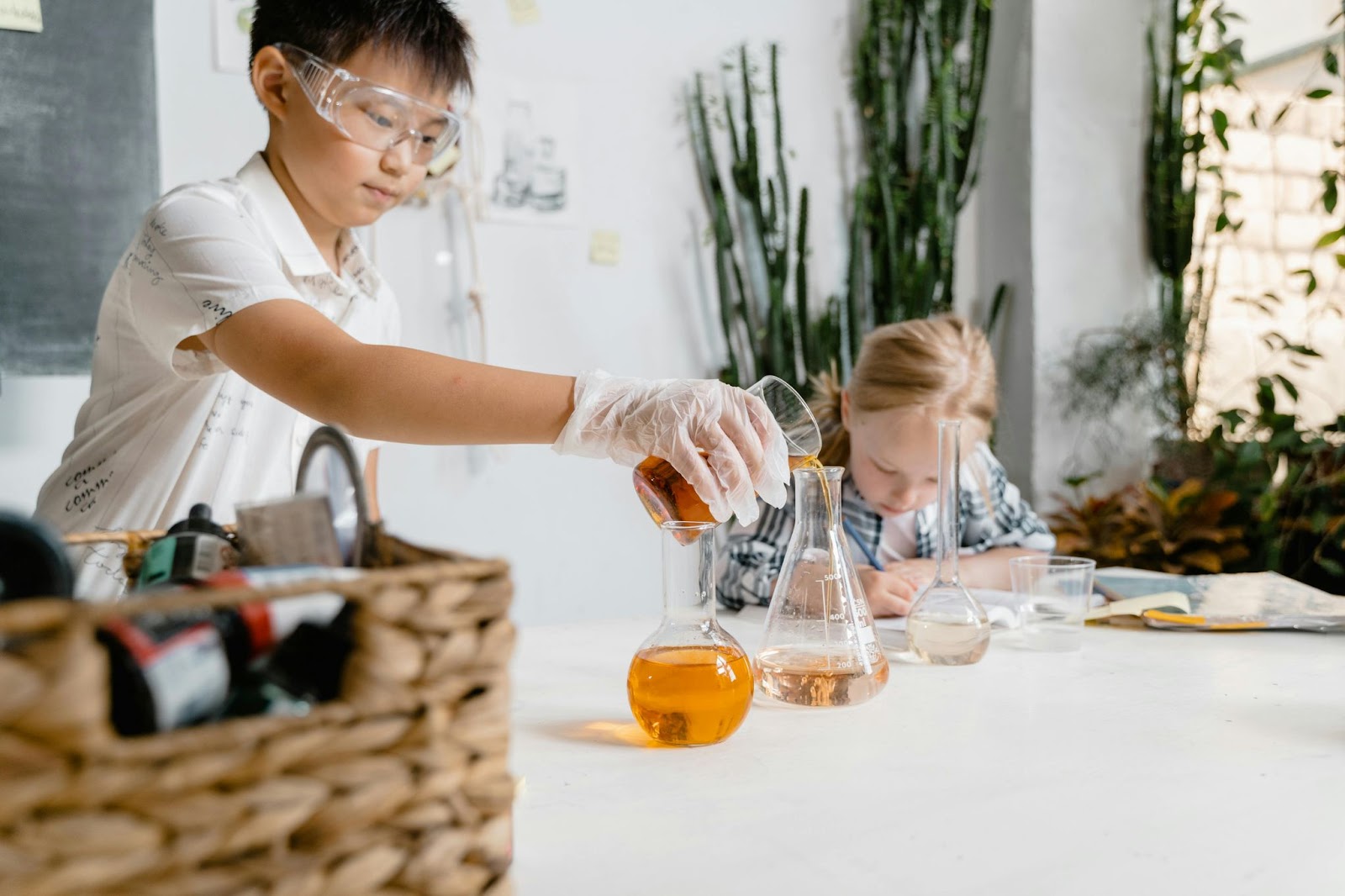
How to Perform These 8 Easy Science Experiments to Do At Home for Kids?
Follow these simple instructions and enjoy the magic of science.
Storm in a Glass
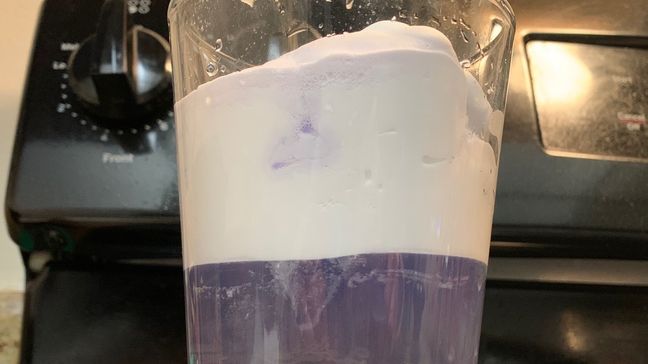
Begin by pouring water into any glass until it reaches the midpoint. Next, ask your dad politely to borrow his shaving cream. Why? Because you need to spray some onto the surface of the water until the glass is three-quarters full. Then, lightly smooth it using a spoon or your finger to create a flat “cloud.”
Now, you will need to combine half a cup of water with 10 drops of food coloring. Once you have made the mixture, slowly add it on top of the cloud.
When the cloud absorbs too much water, it will explode like a real storm. It is an exciting experiment to teach kids how rain is formed.
Floating Drawing/Floating Fish
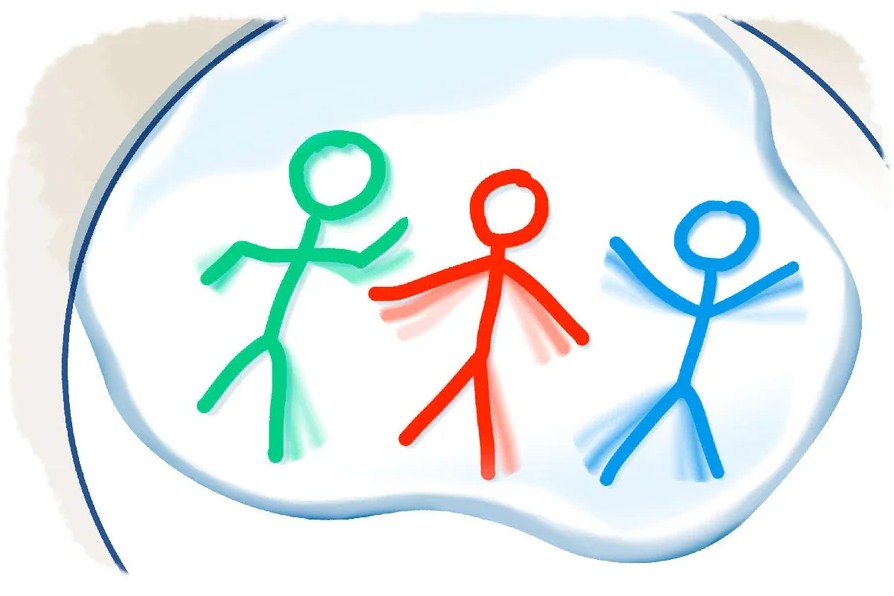
All right, this experiment is about solubility and density using a fish drawing. But feel free to draw your favorite thing.
But let’s assume you’ve got a fish on your mind. So, here’s what you need to do.
Draw a fish on the surface of a glass tray or plate with a dry-erase marker (try to keep it neat). Next, carefully pour water on without smearing the drawing.
Now, all eyes are on the drawing! The fish will float because the dry-erase ink is less dense and doesn’t dissolve in water. You can even tilt the dish to see the fish move around.
Cool, right?
Lava Lamp
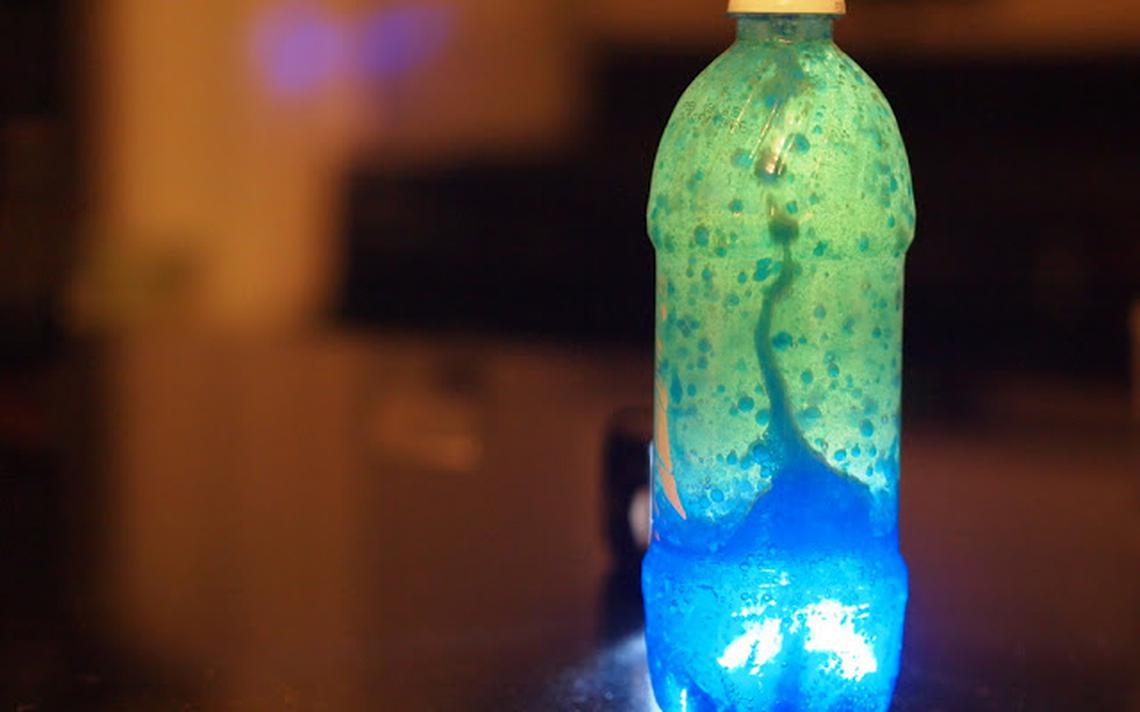
Let’s create a mini lava lamp at home!
Start by filling around one-quarter (1/4) of water in a soft plastic bottle. Then, slowly add vegetable oil until almost full. Don’t rush here and let both liquids be separate (don’t worry, it won’t take long).
Next, add in a few favorite food coloring drops (I would prefer yellow or orange), and watch the color sink through the oil. Now, break a fizzy tablet (you can go for Alka Seltzer) in half and drop one piece into the bottle.
Once the tablet dissolves, it releases bubbles that carry the colored water upward before gently falling back down.
Glass Bottle Xylophone
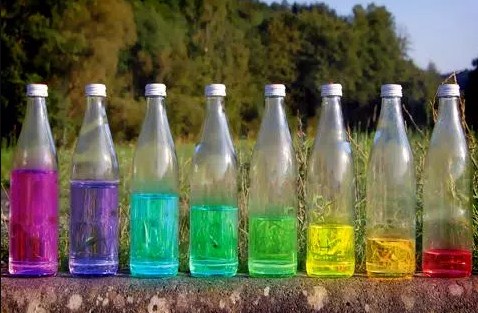
Let’s explore the sound of the Xylophone with six glass bottles.
Arrange 6 identical glass bottles without lids in a line. First, gently tap each bottle with a spoon and guess the sound.
Then, fill each one of them with increasing amounts of water. For example, you can start by adding 1/4 cup of water to the first bottle. And then add a few drops of food coloring.
Then, tap each bottle with a metal spoon and observe different frequencies of sounds (technically, they do sound like musical notes). Bottles with more water will produce deeper, slower sounds, while bottles with less water will create higher, faster pitches.
Make a Volcano at Home
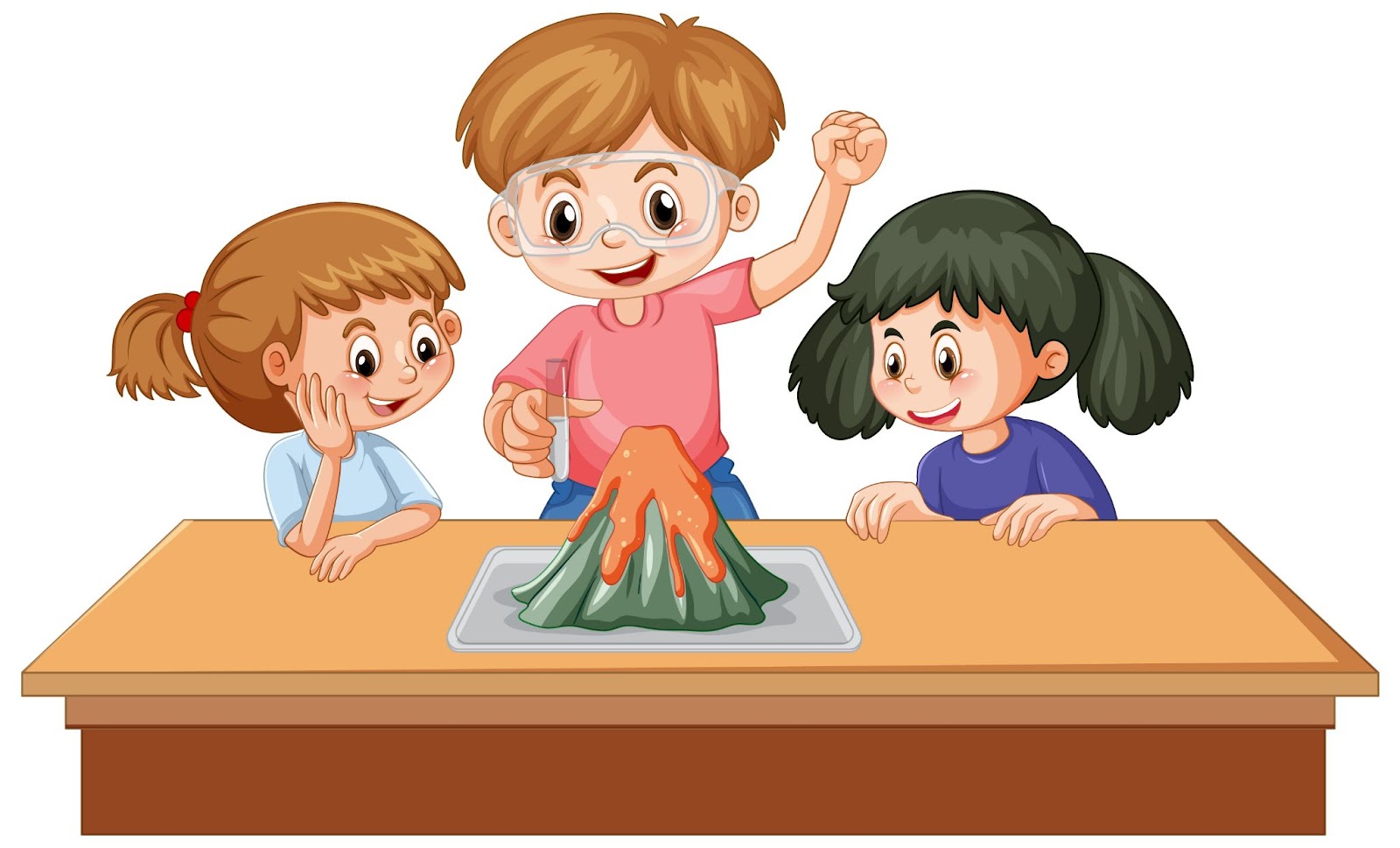
Perform this experiment outside because things can be a bit messier after this one. But nothing should stop kids’ learning, right?
In an empty 2-liter soda bottle, mix 400 ml of white vinegar. Followed by 100 ml of warm water and 10 ml of dish soap. Lastly, add 2 drops of food coloring.
Take a separate jar and blend half (1/2) a cup of baking soda with water until smooth. Then, pour the baking soda slurry into the bottle quickly and step back.
The reaction releases carbon dioxide, creating an exciting eruption that mimics a fizzy soda explosion just like a volcano.
Making Rainbow in a Glass with Skittles
This experiment makes a colorful rainbow with Skittles.
Divide your Skittles into 5 cups.
- Cup 1: 2 red skittles
- Cup 2: 6 yellow skittles
- Cup 3: 4 orange skittles
- Cup 4: 8 green skittles
- Cup 5: 10 purple skittles
Next, heat a mug of water for about 1.5 minutes. Then, add 2 tablespoons of the heated water to each Skittle cup and stir gently.
Let the colors mix and cool. Now, take a dropper to layer the colored water into a clear glass. Don’t rush!
Make purple your first layer while keeping red as your last. Notice how different densities create distinct layers forming a rainbow.
The Bouncing Egg
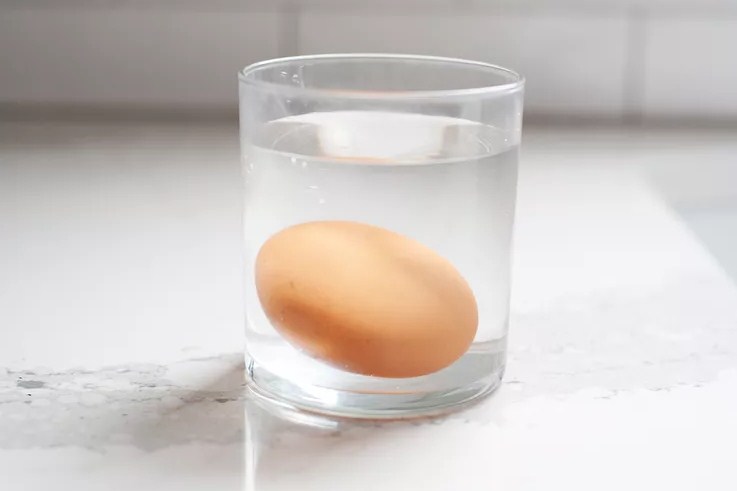
Egg experiment with a twist! First, you need to grab a raw egg. Then, put it inside a small container full of vinegar. Okay, now you need to forget it like it was never there. I mean, you need 2 days to let the vinegar work on the hard material of the eggshell. This will leave you with a soft and elastic membrane as a result.
After the shell is missing, you should carefully wash the egg with a bit of water. It is to get rid of any extra parts. Now, just lightly tap the egg and see it bounce.
But be careful, it’s really fragile, so hold it carefully. A really strong bounce may cause it to b. So, let’s not imitate your favorite basketball player at the moment. You can try this incredible science experiment right in your own house.
Elephant Toothpaste

While it can be hard to pull out a real-life elephant from a container, a fancy foamy-like material is still possible. How to begin? Well, put a plastic bottle on the tray and squirt it with a few drops of dish soap.
After that, add 4 oz of hydrogen peroxide and squeeze a bit of food coloring into the bottle. Then, dissolve a packet of yeast in warm water until smooth and add it through a funnel.
Once done, it’s time to swirl the bottle. But make sure to get a few steps back because the next thing you will see is a colorful, foamy eruption coming out of it.
Conclusion
So, I couldn’t be that genius “Dexter” when I was a child. But these easy science experiments to do at home for kids can surely help the new generation become one. And mums and dads, this is also your chance to re-live childhood by enjoying these fun experiments with your little ones.
FAQs
Is it safe to do science experiments at home for kids?
While these experiments are safe for everyone, it is recommended to wear a proper safety kit to avoid any mishap. Parents must ensure their kids are wearing goggles, gloves, and masks and should supervise them.
Which science experiment is the easiest to do at home?
Storm in a glass, bottle xylophone, and lava lamp are some of the easiest science experiments to do at home. They don’t require much material, and the results are also fascinating for kids.
READ MORE: At What Age Can a Child Start Yoga?







